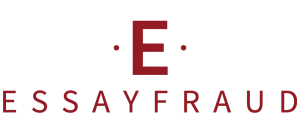How to write a course
Crafting a course is akin to architecting a learning voyage, where every module, lesson, and assignment forms an integral part of the educational landscape. Whether you’re an educator shaping the minds of the future or an individual passionate about sharing knowledge, the art of creating a course involves thoughtful planning, pedagogical expertise, and a dash of creativity. In this exploration of ‘How to Write a Course,’ we navigate the essential elements that transform a mere syllabus into a transformative learning experience. From conceptualization to execution, let’s embark on the journey of building a course that engages, inspires, and leaves a lasting impact on learners.

What is a course and why is it important?
GCSE is a course offered in schools in England and Wales. This course covers a wide range of topics, including math, science, English, history, and more. Students must complete a series of exams to fulfill course requirements. Upon graduation, they will receive a GCSE certificate indicating that they have successfully completed the course. This certificate can also be used to apply for a job or continue studying at a university. 1. Analyze and evaluate information gathered from various sources to make appropriate conclusions. 2. Make a report on the selected topic using accurate and relevant data. 3. Identify problems related to the topic and seek solutions for them. 4. Conduct in-depth research on the topic, including conducting interviews with experts in the field. 5. Present research results to the class or other audiences effectively and persuasively.

- British Composition – English course is an extended essay in most cases. A student has the right to choose a topic. Tutors provide their students with a list of recommended titles to choose from, sources to observe & analyze, and format (e.g. comparison between various relevant articles).
- Science. – The course for science is a complex task. This type of work appears in the form of scientific papers to test what is researched and to report the author independently.
- Geography – The geography course is all about collecting, reporting and explaining information to answer specific geographic questions or offer solutions to those problems. One idea is to explore shopping mall usage or analyze recent tornadoes. It doesn’t matter whether you have to prepare the Columbia course or the paper for another institution of education, keep these differences in mind!
Need help WRITING RESUMES?
Just submit your requirements and choose a resume writer. That’s all we need to write a winning resume for you.
Course types described
Students will also be expected to read and analyze English texts, as well as write reports on a given theme. At the GCE elementary level, students will be expected to learn English vocabulary and structures. They will also be expected to write a short essay, totaling 500-1000 words. Students will also be expected to read and analyze English texts, as well as write reports on a given theme. English courses also involve general classroom subjects such as general knowledge, history, geography and mathematics. These lessons are designed to give you a better understanding of British culture and way of thinking. In addition, these lessons are also designed to help students learn how to interact effectively with foreigners.
Analysis of different data sources can help target different audiences. Written data sources such as articles, books and reports can be used to convey detailed and accurate information. Oral data sources such as interviews, seminars and presentations can be used to convey information in a more interactive and personal way. Multimedia data sources such as videos, images, and animations can be used to convey information in a more visual and easy-to-understand way. These three types of data sources can be combined to target different audiences. For example, if you want to target a younger or millennial audience, you could combine articles with videos or animations to create more interactive and easy-to-understand content. If you want to target an adult or elderly audience, you can combine articles with interviews or presentations to provide detailed and accurate information. This way, you can choose the data source that fits your audience’s needs. Blogs are also an effective way to share content with your audience. Blogs can be used to publish articles, interviews, presentations, videos, pictures, animations and more. With this blog you can share content online with a worldwide audience without geographical or time boundaries. Besides that, blogs are also a good platform for readers to interact with writers through comments or discussions on the blog forum.
How to write a course: A guide for students
1. Lack of preparation: If students do not prepare well for the course, they may fail to complete the assigned assignments and eventually be disqualified. 2. Lack of motivation: Students who do not have sufficient motivation to study and complete the assigned tasks may fail and be disqualified. 3. Lack of skills: If students do not have the necessary skills to complete the assigned tasks, they may fail and be disqualified. 4. Lack of participation: Students must actively participate in class in order to get high marks and pass well. If students do not participate, they may be disqualified.
- Plagiarism – This is the worst thing that can happen to any kind of academic assignment. A lot of relevant information is available on the World Wide Web today, and tutors are strict about plagiarism issues. Write everything in your own words! If you decide to include citations from sources, apply the suggested citation format and develop a list of references. Sign a declaration claiming it is your original project.
- Number of words – Do not ignore specific requirements regarding the length of the course. Specify if footnotes, attachments, & references are included in the word count.
- Topic – Go through the list of available themes. If there is an examination planned on a certain topic, try to choose another idea for the course.
- Tutors Help – Don’t neglect your instructor’s help, ask them to provide guidance on what to write. Ask questions to learn more details, but keep in mind they may go through draft 1 once and offer only a few general recommendations.

Choose a topic for your project
- Analyze the list of topics offered or develop your own
- Choose a topic from your area of expertise related to the subject being studied
- Choose a topic that interests you
- Choose a topic that you started observing in the past
- Check how much relevant, up-to-date information is available on the Internet about each topic
- Choose what you can measure, change & control (they call it ‘fair test’)
- Use the ideas of previous researchers and students
- Don’t choose a topic with a broad scope – you risk struggling to research properly
10 good course topics
- Non-traditional poetic forms with TC Tolbert
- Documentary Foundations: Use of Oral History with Beth Alvarado
- Traditional forms of poetry
- Hermit Crab: Kind of Fiction
- Wrote autobiographical poetry
- Creative non-fiction on the example of a new journalist
- Unlimited writers
- Writing sticky stuff
- Socially engaged literary arts
- General vocabulary.
Writing course outline
1. Make a table of contents for the extended essay. This will serve as an outline of what to write about and help the writer stay focused on the topic. 2. Determine the desired number of words for the essay. This will help the author determine how much information to include and how much space to make available for each sub-topic. 3. Look for relevant references to support your argument. These references must be accurate, up to date, and of high quality to make your essay appear professional and credible. 4. Make a list of the main points you want to convey in your essay. This will help the writer organize information more easily and effectively so that the main purpose of the essay is achieved properly. 5. Write an initial draft of your essay according to the list of key points that you made earlier. Be sure to include references when needed and edit as often as possible so that the end result is perfect and neat. 6. After the initial draft is finished, re-do the editing process to ensure that all information is accurate, up to date, and in accordance with certain academic standards (if any). 7. Don’t forget to do the final proofreading before submitting your work to your readers or teachers!

This course outline will address how to pursue global goals at lower costs and the role of human rights. This course will cover a wide range of topics, including: 1. Introduction to human rights and how they can be used to achieve global goals. 2. How to identify and understand the issues related to global pursuits. 3. How to use technology to help achieve global goals at lower costs. 4. How to apply human rights principles in global pursuit projects. 5. How to build collaboration between governments, non-governmental organizations, and civil society to support sustainable global pursuit projects. 6. How to effectively and efficiently integrate the human rights approach into global pursuit projects.
Corporations such as Wal-Mart have become a topic of interest to many as they have been accused of violating human rights by selecting and using child labor in factories. This abuse of human rights by large corporations has generated widespread concern around the world. It has also prompted activists to fight to ensure that human rights are respected by all companies, especially those operating overseas. Thus, this topic is very important for everyone who cares about the protection of human rights.
How to write an introduction for a course?
- To attract the attention of readers
- To introduce the topic
- To explain the importance of research
- To come up with a compelling thesis statement
